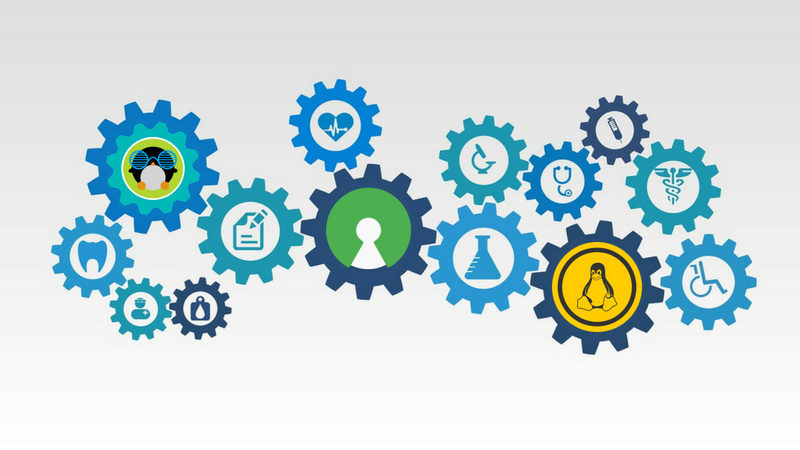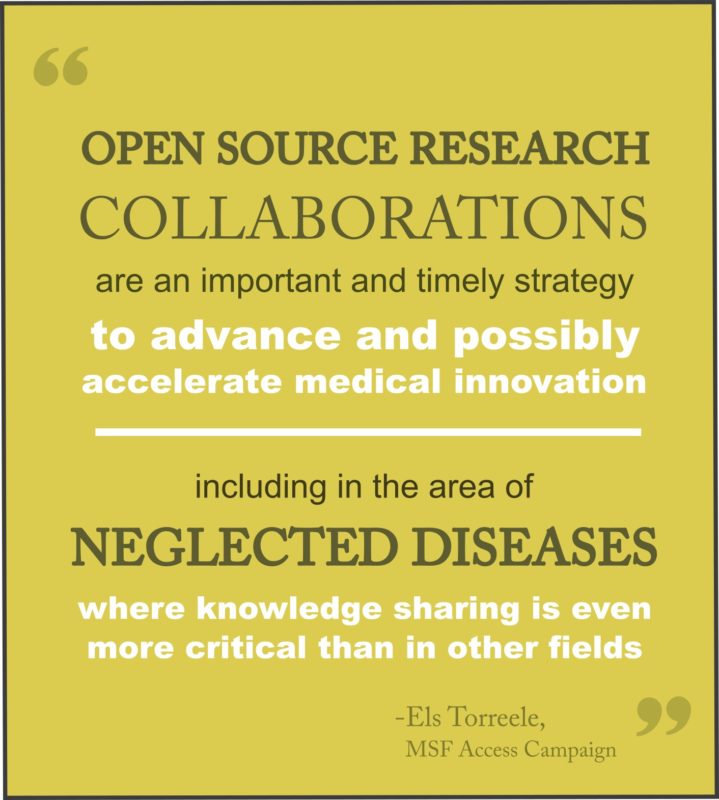In this article, we discuss the various reasons behind adopting technologies such as AI and Blockchain powered with Linux and Open Source to improve the quality of ways to improve healthcare and fight diseases.

In our previous article, we saw how Netflix harnesses an Open Source AI model for their recommendation of shows. Now let’s see how the same approach is being adopted to fight terrible diseases worldwide, again for the recommendation but intended for diagnosis of disease.
We will explore the different paths being followed by innovators and scientists throughout the world to strengthen their research practices significantly to find the best solutions or cures.
This video clearly reveals how an Open Source Approach can play a vital role to prevent a diabetes patient from slipping into a potential coma:
But before we do that, let’s quickly know the two crucial terminologies we’ll be using in this article:
1. What is Artificial Intelligence (AI)?
Today’s AI in simple terms is an effort to simulate the capabilities of our human brain into automated systems. This definition is heavily influenced by the radical changes brought by deep learning. We have already discussed Artificial Intelligence in our previous article and you may refer to that for better understanding.
2. What is Blockchain?
Originally invented for the cryptocurrency, Blockchain is an encrypted list of records known as blocks that are linked together. These blocks can keep growing continuously with each one containing information about the earlier.
In this article, we will see its usefulness and application in the medical domain.
A. Open Source Bioinformatics
Here is an interesting insight on open sourcing biology:
Bioinformatics is an interdisciplinary field unifying Computer Science and Biological Sciences. It is a continuously evolving field which involves developing computational methods and software tools to analyze and interpret biological data.
Mathematical biology and biostatistics play a vital role in Computational Biology. Computational Biology and Bioinformatics are very closely related but not exactly the same and have unique applicabilities.
Open Source Bioinformatics, as the phrase implies, involves using an open source approach while developing and creating the software tools mentioned in the previous para.
In today’s Bioinformatics studies, Linux plays a huge part in the development of such tools within the open source OS. Most developers and bioinformaticians prefer and recommend Bioinformatics packages to be built on and for Linux.
Some Linux distros made for Bioinformatics and Science
Some distros very suitable for Bioinformatics are as follows that come with preinstalled Bioinformatics/Scientific apps. We have also tried to lookup different journals in order to understand their significance:
Bio-Linux
Bio-Linux is based on Ubuntu and can be installed with the help of a transformation package on an existing Ubuntu distro or as a fresh installation.
BioSlax
Slax Linux is a portable-friendly and Debian based OS, which has been used to create BioSlax, that has a suite of bioinformatics tools from the resource team of the BioInformatics Center, National University of Singapore.
OSDDLinux
A Linux distro exclusively made with Open Source Drug Discovery (OSDD) in mind, discussed in detail in the next section “Open Source Pharma” as to why such an OS was specifically needed and designed.
DNALinux
DNALinux comes in the form of a virtual machine preinstalled with Bioinformatics software.
Gentoo
Sabayon, discussed in an earlier article, is Gentoo based. The core Gentoo operating system comes with an exhaustive collection of Bioinformatics packages.
Scientific Linux
Scientific Linux is based on Red Hat Enterprise Linux, especially fine-tuned for scientific work.
B. Open Source Pharma
Open Source Pharma is Linux for Drugs.
Pharma is a short form for the word “pharmaceutical”, relating to medicine/therapeutic drug and also implies usage or preparation of the same.
Open Source Pharma is an initiative that specifically understands the need of an open source approach towards various applications of Bioinformatics and Computational Biology in the development of existing or new medicines/therapeutic drugs.
Els Torreele, Director of the Access to Essential Medicines Initiative at the Open Society Foundations and Executive Director of the MSF Access Campaign made the following insightful quote (obtained via the Open Source Pharma Facebook page) that makes so much sense:
Now if we relate all of the information in the above paragraph and quote to Open Source Ideology, it becomes clearer as to why it is so necessary to adopt this model. Check out this detailed article which explains why it is a great approach for new and cheaper medicines.
Open Source Malaria
Open Source Malaria is a fine example of following an Open Source Pharma model. Discussed in the keynote video above and also earlier in our first open science article, the initiative made it possible to make a $750 malaria drug become cheaply available.
C. Open Source powered AI and Blockchain for Medical Diagnosis
Even Microsoft, the owner of Closed Source Windows readily highlighted the significance of an open source model powering AI and machine learning. The above video highlights the enhanced accuracy of AI and its capabilities to diagnose cardio-logical diseases and cancer.
In the end, the video also points out certain potential pitfalls of AI such as lack of transparency, possible manipulation and privacy and this is where Blockchain fills the gap to create a great combo with AI in revolutionizing healthcare.
This is why Blockchain has become a need and is no longer an option in healthcare. The following talks about the same and its significance:
D. Open Source Skychain
A Russian Open Source Tech, Skychain, is an open source project based on Blockchain, which can implement high-quality medical neural networks for diagnosis of any ailment or disease.
The project team aims to confidently compete with any closed source project by creating the best infrastructure to accumulate resources of the majority of the participants in the AI industry.
Skychain greatly reduces human errors while diagnosing disease
and is shown competing with doctors in the following video for performing medical diagnosis.
You can see Skychain using Tensorflow for the same. These videos were conveniently dubbed in English for better understanding:
How Skychain actually works:
E. Impact of an Open Source Blockchain powered Drug Discovery System
This remarkable paper about the same has been included in the description of the following video:
Looking further, Open Source Blockchain platforms can radically accelerate and revolutionize drug discovery and medical research further ahead.
Summary
So in this medical applications’ article, we briefly explained how Blockchain works and applied an open source perspective into Bioinformatics, Pharma and Medical Diagnosis. We also saw how an Open Source AI and Blockchain model can impact Healthcare and Medical Research.
Looking forward to further explore similar topics in another open science article. Thank you for taking the time for reading.


